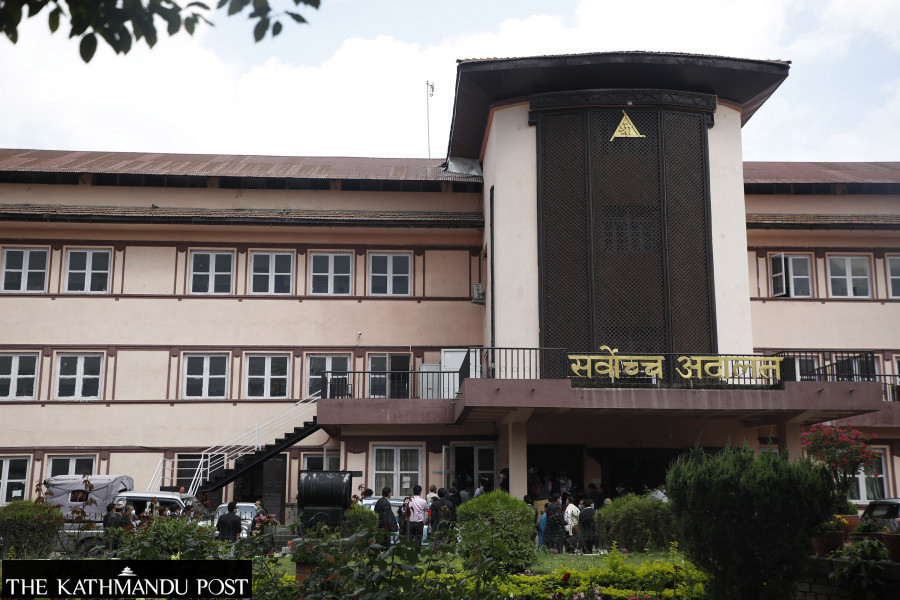National
Supreme Court launches automation system for case management
Despite some drawbacks, the system is expected to clear service seekers’ doubts about the judiciary’s intention.
Tika R Pradhan
Starting Monday, the Supreme Court has implemented its long-awaited automation system to ensure transparency in case management.
Inaugurating the new system, newly appointed Chief Justice Bishowambhar Prasad Shrestha said the process to reform the judiciary has now started with the system’s implementation.
“It will make employees and service seekers confident and with it, the reform process has moved ahead,” Shrestha said at the inauguration function organised at the Supreme Court. “This will help our employees to work freely with high motivation.”
On December 1, 2021, then Chief Justice Cholendra Shumsher Rana had introduced the lottery system, following a month-long obstruction in the hearings by lawyers and the justices. The system was introduced to decide which bench hears what cases after Rana received widespread criticism for his controversial moves, including the alleged bargaining for a ministerial position.
For the first time in Nepal’s 70 years of judicial history, Chief Justice Rana had to refrain from assigning cases to justices as he lost their trust.
Like the lottery system, the automation system simply bars the chief justice from assigning cases. The reason the chief justice is usually authorised to assign cases stems from the fact that the top administrator allocates benches based on the nature of the cases and the expertise of justices.
On November 19, 2021, a full court of the Supreme Court endorsed a draft to revise the existing regulations and a directive to adopt a lottery system to assign cases to justices, marking an end to the prerogative enjoyed by the Chief Justice to prepare the cause list.
When Supreme Court justices on October 25, 2021 launched their protest against then Chief Justice Rana, one of their demands was that cases should be assigned to benches through a lottery system.
Legal experts have said no questions were raised over the selection of justices for the cause list until Rana came to power and it was merely due to the trust deficit against him that he was forced to introduce the lottery system.
“Actually the lottery system had to be introduced due to complaints against then Chief Justice Cholendra Shumsher Rana for rampant bench shopping,” said Balaram KC, former justice of the Supreme Court. “It’s all because of the mistrust against Rana.”
The study panel led by former Chief Justice Hari Krishna Karki recommended the judiciary should adopt an automation system to end the rampant corruption and until the system is developed it should go for the lottery system for case management. Karki led the panel that included the chairman of the Nepal Bar Association as one of its members and handed over its report on July 29, 2021.
According to Chief Justice Shrestha, the automation system was developed by the employees of the Supreme Court.
Though there are some drawbacks to the automation system, service seekers will not have any doubt about the judiciary’s intention after its implementation, KC, the former justice, told the Post.
“Sometimes, this system may not have quality judgement as certain cases may not fall on the bench of the justices having expertise on the particular subject,” he said. “But now, service seekers cannot question the judiciary’s intention.”
Officials at the Supreme Court said the automation system will gradually be implemented in other courts as well.




 13.12°C Kathmandu
13.12°C Kathmandu















